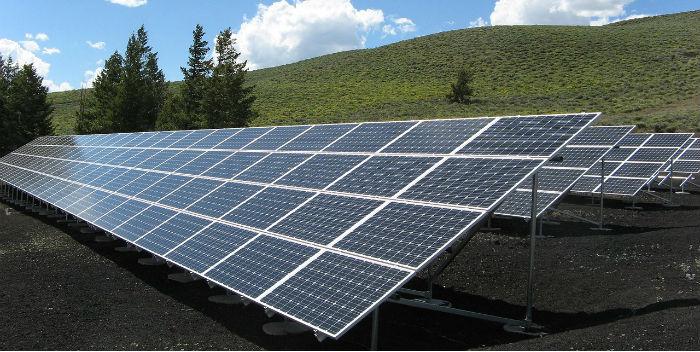 International. The National Association of Photovoltaic Producers, Anpier, from Spain, presented a study that addresses an analysis of the situation of the photovoltaic sector worldwide; providing macroeconomic data and on installed power.
International. The National Association of Photovoltaic Producers, Anpier, from Spain, presented a study that addresses an analysis of the situation of the photovoltaic sector worldwide; providing macroeconomic data and on installed power.
Also contemplating variables such as: Climate change, decarbonization of the economy by 2050, international agreements and Emission Rights. The study also addresses in detail the situation of the sector at the state level: with data on the situation, regulation, generation, market, power, self-consumption and sectoral perspectives.
The world energy map is firmly moving towards a renewable model:
The study indicates that photovoltaic energy is at its peak growth worldwide, mainly boosted by the development, in recent years, of this technology in some Asian countries, such as China, India or Japan. This last year the barrier of 400 GW accumulated has been exceeded, surpassing the 393 GW nuclear in the world; while the previous year it was already a memorable milestone that 300 GW was reached.
With regard to the total installed capacity, it should be noted that between China, the United States, Japan and Germany, that is, the four countries with the highest installed capacity in the world, they cover almost 70% of the total installed capacity. China is the first country in the world in terms of installed capacity, with 131 GW, with more than double the installed capacity of the second, the United States, with 51 MW. In 2017, confirming its dominance in the markets, 53 GW were installed in China, which implies that China installed approximately 51% of the world's total power.
In recent years the incorporation of this type of technology in the energy markets is being unstoppable: during 2016 the installed world power increased by 50%, and in 2017 by 38.7%. In this sense, in 2016 the world installed capacity was 75 GW, reaching 303 GW of accumulated capacity worldwide, while last year these figures were far exceeded, around 100 GW installed.
The establishment of a stable and favorable regulatory framework towards renewable energies is of vital importance for the development of photovoltaics. In Spain, past experience is a clear demonstration of how severely a country's regulatory changes can affect the integration of this technology, not only for its immediate effects, but also for its long-term effects. In recent years, the economic policies to support photovoltaics in different countries have been moving from remuneration in the form of tariffs, to other remuneration mechanisms such as auctions.
In this regard, given the degree of learning achieved in photovoltaics and its continuous cost reduction, the technology has become fully competitive compared to the rest of generation technologies. This has meant that the main generation auctions worldwide have been covered with photovoltaics. For example, Abu Dhabi and Dubai, where in 2016 auctions were closed with PPAs (Power Purchase Agreements) below $0.03/kWh. On the other hand, in Spain 3.9 GW photovoltaic were awarded with an investment cost of less than € 700 / kW.
However, this growth is likely to be proportionally lower than in previous years, due to the fact that markets are beginning to consolidate, and because the last two years have been marked by a pace that is difficult to maintain.
The evolution of the price of the flat panel photovoltaic module, reflects a clear and continuous decrease in costs, the price of the photovoltaic panel has fallen by 89% since 2007, due to the development and evolution of this technology.
The cheapening of inverter equipment over time has also occurred, but to a much lesser extent than the spectacular downward curve of solar panels prices, specifically the evolution of the price of photovoltaic solar inverters, per unit of power, reflects a clear and continuous decrease in costs, but much softer, as can be seen in the following graph:
Renewable policies in Europe remain:
- The EU imports 53% of the energy it consumes.
- 75% of the EU's housing stock is energy inefficient.
- 94% of transport depends on petroleum products, of which 90% is imported.
- Wholesale electricity prices are 30% higher.
- In this context and with the intention of contributing to avoid the most devastating effects of Climate Change, the European Union intends to strengthen its ambition to meet energy commitments and lead the fight against climate change. In November 2016, the European Commission presented a package of energy measures with objectives for 2030, whose future renewables directive has already been agreed by the Commission, Parliament and the Council. Two articles should be highlighted from the point of view of photovoltaic and social generation: Article 22 Renewable energy communities and Article 6 which establishes the obligation of Member States to ensure that the level of support provided to renewable energy projects, as well as the conditions to which it is subject, if revised, do not have a negative impact on the rights or economy of the projects.
- While in 2016 Europe had experienced a slight decrease in the PHOTOVOLTAIC market, in 2017 it returned to the growing trend, which it had already experienced in 2015. Thus, the total aggregate capacity that year stood at around 6.5 GW, compared to the 6 GW installed in 2016.
Source: National Association of Photovoltaic Producers.














